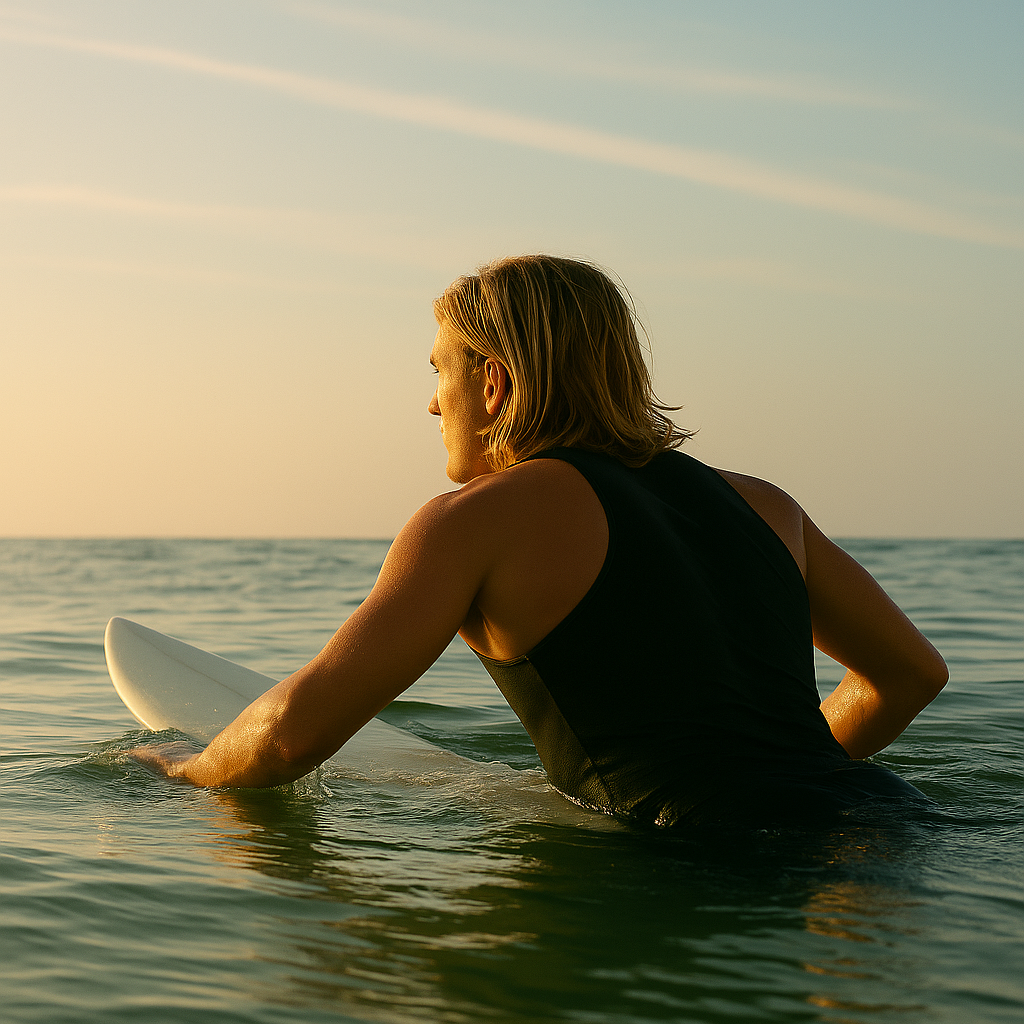
Why Paddling Out Matters
Every great surf session starts with one challenge: getting past the waves.
For beginners, paddling out can be the most exhausting and confusing part of surfing. But with the right technique and mindset, it becomes second nature — your gateway to the lineup.
Mastering how to paddle efficiently saves energy, improves control, and sets you up for every ride that follows.
Step 1: Choose the Right Spot to Paddle Out
Before you even hit the water, take a moment to study the lineup. Watch where other surfers paddle out — they’ll often use channels or rips, which are deeper areas where waves break less frequently.
Tips:
- Avoid paddling straight into the middle of breaking waves.
- Look for a rip current or calm section between peaks — it’s your express lane to the outside.
- Always check for obstacles like rocks or reefs before paddling out.
Step 2: Position Yourself Correctly on the Board
Good balance starts with proper positioning.
- Lie flat on your board with your body centered.
- Your toes should barely touch the tail; your chin should hover just above the nose.
- If the nose sinks, you’re too far forward. If it sticks up, you’re too far back.
This “sweet spot” helps your board glide smoothly through the water.
Step 3: Perfect Your Paddle Technique
Strong, efficient paddling is all about form, not force.
How to paddle:
- Keep your fingers slightly cupped.
- Reach forward deeply, pull the water along your board, and exit near your hip.
- Alternate arms in a steady rhythm — smooth, not splashy.
Pro tip: Use your core and back muscles, not just your arms. This gives you more endurance and power.
Step 4: Time Your Paddle Between Sets
One of the most common beginner mistakes is paddling out during a heavy set. You’ll waste energy and risk getting caught in whitewater.
Instead:
- Watch the ocean for a few minutes before entering.
- Wait for a lull between sets — the calm gap that often lasts 20–40 seconds.
- Paddle hard and steady during this window to reach the outside.
Patience is your best ally here.
Step 5: Handling Oncoming Waves
Even with good timing, you’ll meet whitewater. Here’s how to handle it safely:
- Small waves: Push up with your hands in a cobra-like position and let the whitewater pass under you.
- Bigger waves: Perform a turtle roll (for longboards) — flip your board upside down, hold it close, and let the wave roll over.
- For shortboards: Use the duck dive — push the nose and then your knee or foot down to glide under the wave.
Each technique keeps your momentum forward instead of being pushed back.
Step 6: Rest and Reposition at the Lineup
Once you reach the outside, take a few deep breaths. Sit up on your board and orient yourself toward the shore.
This is your moment to:
- Observe how waves form and break.
- Respect rotation with others already in the lineup.
- Stay relaxed — you made it past the hardest part.
Step 7: Practice, Patience, and Progress
Paddling out gets easier with every session. The more time you spend in the water, the more instinctively you’ll read the ocean.
Focus on:
- Efficiency over speed.
- Rhythm over power.
- Calm over chaos.
Each paddle becomes part of the meditative rhythm that defines surfing itself.
Common Mistakes to Avoid
- Looking down instead of forward — it kills your momentum.
- Kicking wildly — your legs should stay relaxed and steady.
- Rushing into the impact zone — always time your entry carefully.
- Overexerting early — save energy for when you need it most.
The best surfers paddle smart, not just hard.
Final Thoughts
Paddling out is where surfing begins — your first connection between body, board, and ocean. It’s the foundation of every wave you’ll ever catch.
With practice and patience, you’ll find your rhythm — the steady pull of arms, the glide of the board, and the moment when you break through the last wave and sit in calm water, ready for your next ride.
It’s more than technique — it’s your first taste of surf freedom.
